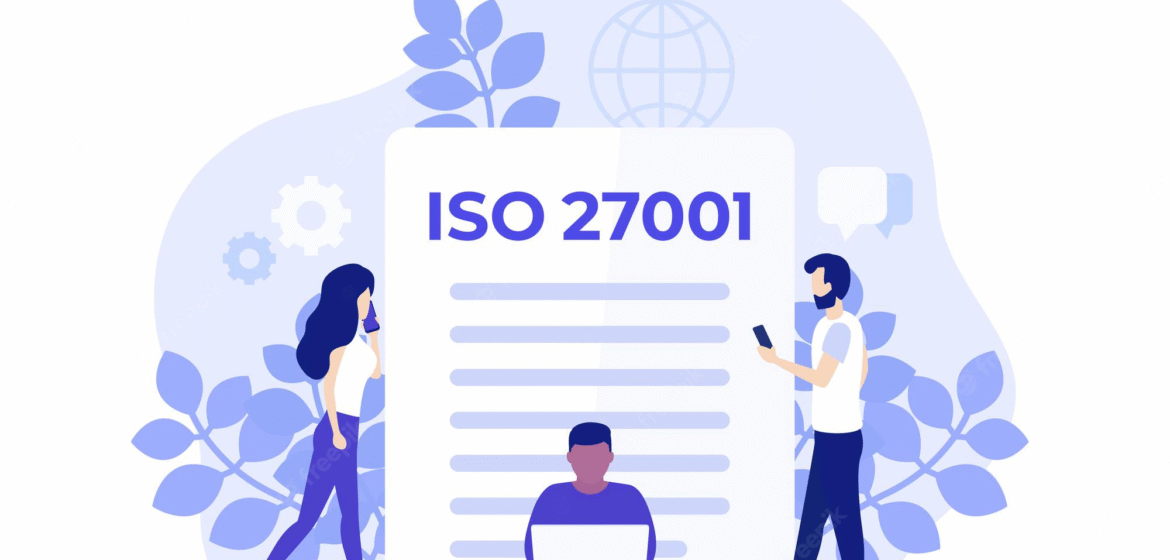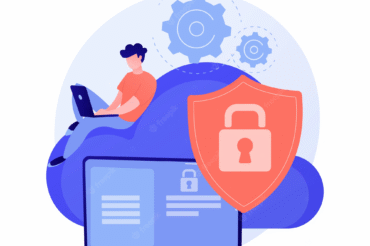ISO 27001 ISMS

ISO 27001 is a standard that outlines the requirements for an information security management system (ISMS). An ISMS is a framework of policies and procedures that helps organizations manage their sensitive and valuable information assets in a systematic and secure way.
The ISO 27001 standard provides guidelines and general principles for initiating, implementing, maintaining, and continually improving information security management in an organization. It also specifies the requirements for establishing, implementing, maintaining, and continually improving an ISMS, as well as the requirements for the assessment and treatment of information security risks.
The goal of an ISMS is to protect an organization’s information assets by identifying and managing potential risks, and implementing controls to mitigate those risks. This includes safeguarding against unauthorized access, use, disclosure, disruption, modification, or destruction of information.
To meet the requirements of the ISO 27001 standard, an organization must establish, document, implement, maintain, and continually improve its ISMS, and must also conduct a risk assessment to identify and prioritize potential risks to its information assets. The organization must then implement controls to mitigate these risks and periodically review and assess the effectiveness of these controls.
Overall, ISO 27001 is a widely recognized and respected international standard that helps organizations ensure the confidentiality, integrity, and availability of their sensitive and valuable information assets.
There are several advantages to implementing an ISO 27001-compliant information security management system (ISMS) within an organization:
- Improved security: An ISMS helps an organization identify and manage potential risks to its information assets, and implement controls to mitigate those risks. This helps to improve the overall security of the organization and protect its sensitive and valuable information assets.
- Enhanced compliance: ISO 27001 is a widely recognized international standard, and compliance with this standard demonstrates that an organization has taken the necessary steps to protect its information assets and meet relevant legal and regulatory requirements.
- Increased efficiency: An ISMS helps an organization to identify and prioritize its information security risks and implement appropriate controls in a systematic and efficient manner. This can lead to improved operational efficiency and reduced costs.
- Improved risk management: An ISMS helps an organization to identify, assess, and manage potential risks to its information assets in a structured and systematic way. This helps the organization to make informed decisions about how to address those risks and allocate resources appropriately.
- Enhanced customer and stakeholder confidence: By demonstrating its commitment to information security and compliance with ISO 27001, an organization can build confidence among its customers and other stakeholders that it takes the security of its information assets seriously.
- Improved reputation: An organization that has implemented an ISMS and is compliant with ISO 27001 is likely to be viewed as more trustworthy and professional by its customers and other stakeholders, which can help to improve its reputation.
To become an ISO 27001-certified company, an organization must implement an information security management system (ISMS) that meets the requirements of the ISO 27001 standard.
Here are the steps involved in achieving ISO 27001 certification:
- Conduct a gap analysis: This involves comparing the organization’s current information security practices and controls with the requirements of the ISO 27001 standard. This can help the organization to identify any areas where its current practices need to be improved or updated in order to meet the standard.
- Establish the ISMS: This involves defining the scope of the ISMS, establishing the ISMS policy and objectives, and identifying the roles and responsibilities of the individuals and teams involved in implementing and maintaining the ISMS.
- Conduct a risk assessment: This involves identifying and evaluating the potential risks to the organization’s information assets, and determining the likelihood and impact of those risks. The risk assessment should be used to prioritize the risks and determine the controls that need to be implemented to mitigate them.
- Implement controls: This involves implementing the controls identified during the risk assessment in order to mitigate the identified risks to the organization’s information assets.
- Document the ISMS: This involves documenting the policies, procedures, and processes that make up the ISMS, including the risk assessment and control implementation process.
- Review and audit the ISMS: This involves regularly reviewing and auditing the ISMS to ensure that it is operating effectively and that the controls are still adequate to mitigate the identified risks.
- Continually improve the ISMS: This involves regularly reviewing and updating the ISMS to ensure that it remains effective and aligned with the organization’s evolving needs and risk profile.
- Obtain certification: Once the organization has established and implemented an ISMS that meets the requirements of the ISO 27001 standard, it can seek certification from an accredited certification body. This typically involves undergoing a formal assessment process to determine whether the organization’s ISMS meets the requirements of the standard. If the assessment is successful, the organization will be granted ISO 27001 certification.
The length of time it takes to implement ISO 27001 into a business will depend on a number of factors, including the size and complexity of the organization, the resources available for the project, and the current state of the organization’s information security practices and controls.
In general, it is advisable to allow sufficient time for the implementation process, as rushing the process may result in a less effective or incomplete ISMS. It is also important to involve relevant stakeholders in the process and to allocate sufficient resources to the project to ensure its success.
As a rough guide, it may take anywhere from a few months to a year or more to fully implement ISO 27001 into a business, depending on the factors mentioned above. However, it is worth noting that the implementation process is ongoing, as the ISMS should be regularly reviewed and updated to ensure that it remains effective and aligned with the organization’s evolving needs and risk profile.
The cost of implementing ISO 27001 will vary depending on a number of factors, including the size and complexity of the organization, the resources available for the project, and the current state of the organization’s information security practices and controls.
Some of the costs that may be associated with implementing ISO 27001 include:
- Training and professional development: Staff may need to be trained on the requirements of the ISO 27001 standard and the organization’s ISMS. This could involve training on topics such as risk assessment, control implementation, and ISMS documentation.
- Consultancy fees: The organization may need to hire a consultant to help with the implementation process, particularly if it does not have the necessary expertise in-house.
- Software and hardware: The organization may need to purchase or upgrade software or hardware to support the ISMS, such as security management software or hardware security modules.
- Certification costs: To become ISO 27001 certified, the organization will need to undergo a formal assessment process by an accredited certification body. There will be a fee for this assessment, as well as any ongoing fees for maintaining the certification.
Overall, the cost of implementing ISO 27001 can vary significantly depending on the specific needs and circumstances of the organization. It is important to carefully assess the costs and benefits of implementing the standard before proceeding with the project.
For any inquiries, our team is available to help. Please don’t hesitate to reach out to us at info@c-yber.com and we’ll do our best to answer any questions you may have.

